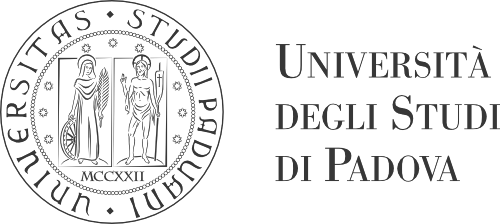Second Level Degree in Mathematics
Jump second level menu- Courses
- Timetable
- Exams
- Individual study program
- Student seminars
- Thesis
- Thesis Archive
- Graduation dates
- Contacts
EXPERIMENTS FOR THE TEACHING OF PHYSICS - 6 CFU
Teacher
Sandra Moretto
Scheduled Period
I Year - 1 Semester | 04/10/2021 - 15/01/2022
Hours: 64 (32 laboratorio, 32 lezione)
Prerequisites
Basic Knowledge from courses of "General Physics"
Basic Knowledge of spreadsheets
Target skills and knowledge
The main competence of the course is to be able to prepare laboratory based physics project in the class, using the best didatic methods and the most suitable approaches.
The course aims to acquire knowledge in the field of laboratory teaching in the field of physics.
The objectives are therefore divided into laboratory objectives and educational and training objectives.
- Educational and training objectives in the field of knowledge and skills:
a) to know didactic design methods (designing for skills, backward design, ..)
b) to know didactic methodologies (story teller, problem solving, ..)
c) planning and analysis of educational projects
- Operational objectives (to the use of instruments and measurement equipment and to measurement procedures and data analysis):
1) understand the measuring instrument and its characteristics (resolution, range, "zero error", scales, etc.);
2) learn to use the tools correctly to reduce systematic errors and "mistakes" (eg parallax errors in reading, etc.);
3) learn to correctly record data (significant figures, uncertainty, units of measurement);
4) Learn to collect data in tables and represent them in graphs that help to interpret the results (eg decide the intervals for the classes of a distribution, the scales for the axes of a graph, the organization of the columns of a table, etc.)
5) learn to keep a laboratory record: in which all the measurements taken (even the wrong ones!) Are noted in good order, with indication of the date, of the experimental conditions and with all the comments.
Social Target:
learn to work in a group (not only because in many cases it is not possible to perform measurements or set up the experimental apparatus on their own, but also for the opportunity to exchange ideas, discuss, discuss)
Examination methods
The exam consists of a written and an oral part.
The written part is the creation of an educational project on a topic of physics chosen by the student.
The oral part is the presentation to the teacher of the same educational project prepared in the written part
Assessment criteria
The expression of a final judgment of competence will be classified according to three major specific areas: that related to the results obtained in the performance of a task or in the realization of the product (objective); that relating to the perception that the student has of his work (subjective); that related to how the student came to achieve these results (intersubjective).
The three perspectives of analysis indicated require different instruments, to be integrated and composed in a multiple and articulated evaluation design. Each of them will use different devices to be detected and understood.
In particular:
Objective dimension: carrying out operational tasks, such as
1. compilation of forms and data on experiments
2. Subjective dimension: forms of self-evaluation, with tools such as questions, logbooks, questionnaires.
3. Intersubjective dimension: observation protocols, comments, interactions between equals
Course contents
Several thematic nuclei of physics will be addressed, for example:
• Study of the motion of a body on a rectilinear guide: online acquisition of distance by sonar, temporal graphs of distance, speed and acceleration, study of friction, measurement of gravity acceleration. Error analysis.
• Geometric optics: laws of reflection and refraction. The properties of the lenses are applied in the construction of a telescope
• Experiments with waves: generation and propagation of waves in a liquid. Wavelength measurement. Reflection and refraction of plane waves. Interference and diffraction phenomena.
• Analysis of the wave characteristics of light with diffraction and interference experiments with laser light. Analysis of data and comparisons with the theoretical model.
• Conservation and transformation of energy. Study and analysis of thermal phenomena. Experiments related to the first law of thermodynamics. State changes.
• Electrical and magnetic phenomena. Magnetic field generated by an electric current. Electromagnetic induction study.
• Didactic methodologies and didactic planning.
Planned learning activities and teaching methods
Frontal lessons
• Demonstration experiments
• Experiments to study / verify a physical law.
These are the experiments that are typically done in an equipped laboratory. Physical law is generally already known. However, they can also be done as an introduction or preparation to the law. They have prevalent didactic values for the measurement, data analysis, a posteriori formalization and for training aspects in general.
• Demonstration experiments.
They are used to attract attention and stimulate reflection on a particular phenomenology, before starting the detailed discussion on the topic.
• Discovery experiments.
They are experiments that have the characteristic of stimulating interest and curiosity and therefore of dragging to find explanations, thus clarifying, generally at a qualitative level only, the physical concepts involved
• Experiments with objects or phenomena of everyday life.
They start from the knowledge and memory of familiar and well-known things, or which you think you know well, and that you are used to describing with everyday language. They help develop "critical thinking" and the transition from everyday to scientific language.
• Use of the computer in the physics laboratory.
Simulations: construction of various types of simulations to observe otherwise inaccessible phenomena (too expensive, in fact impossible or dangerous). The computer can then be used both for data analysis and for the online collection of data from an experiment, using appropriate sensors and interfaces for connecting to the computer. They are particularly useful for collecting data that changes very quickly or very slowly over time
Additional notes about suggested reading
Textbooks (and optional supplementary readings)
- , Guida all'insegnamento della fisicaArnold B. Arons, Bologna, Zanichelli, 1992.
- , Multimedia in physics teaching and learningSelected paper from the 14th MPTL workshop Udine 2009Udine, Italy, 23-25 September 2009edited by M. Michelini, R. Lambourne and L. Mathelitsch, Bologna, Società Italiana di Fisica, 0.
- , Homework and test questions for introductory physics teachingArnold B. Arons, New York \etc.!, John Wiley, 0.
- , Workshop Materials: Physics Teaching and the Development of Reasoning.
- , Improving Physics Teaching.

